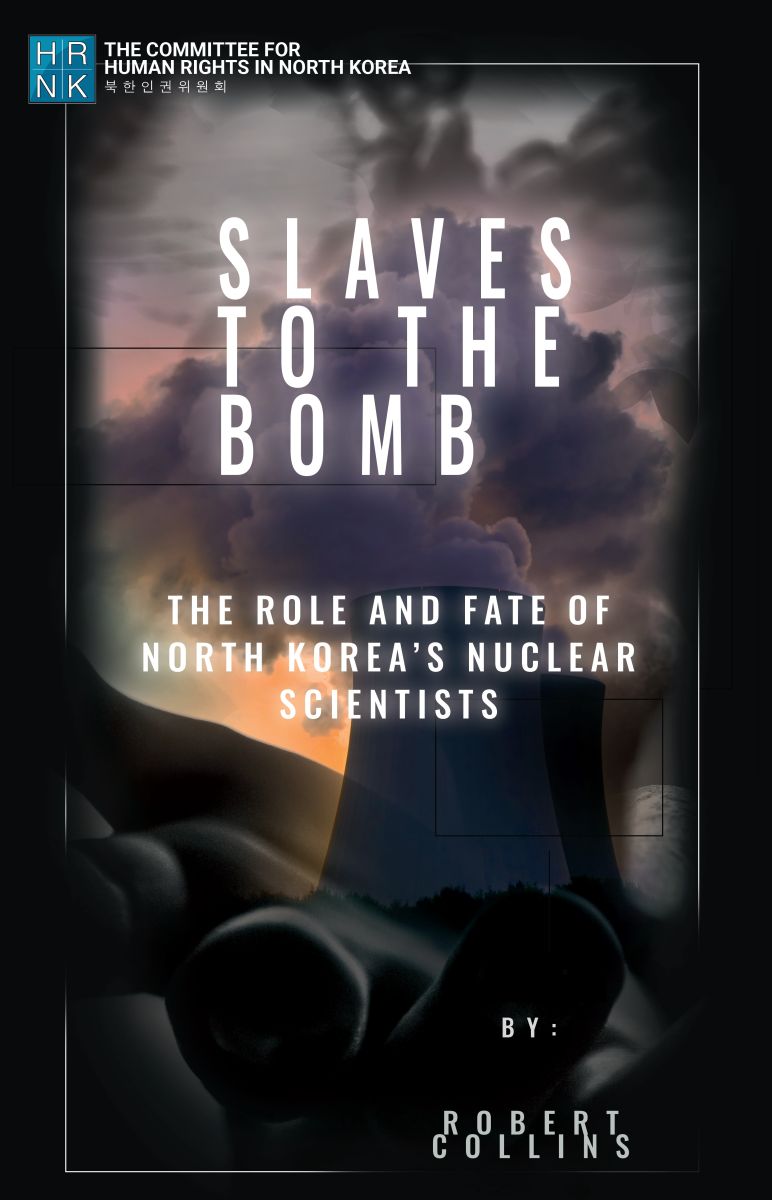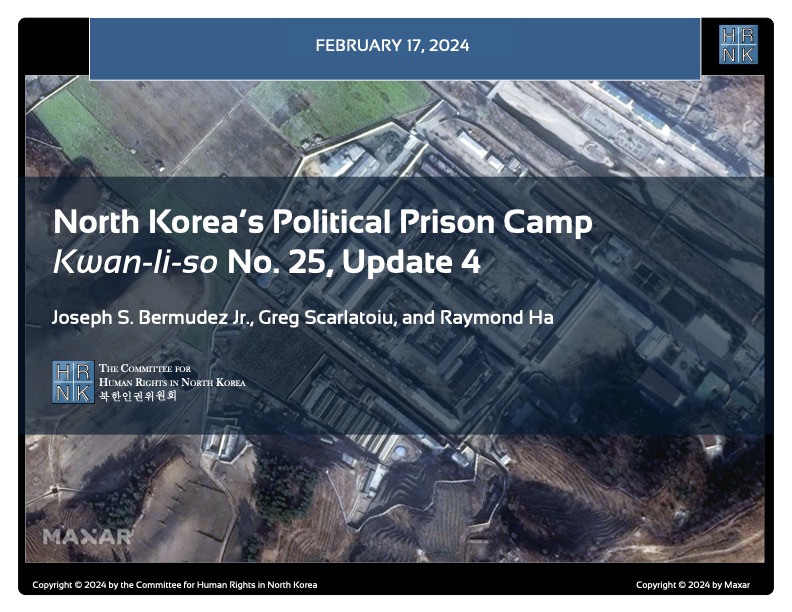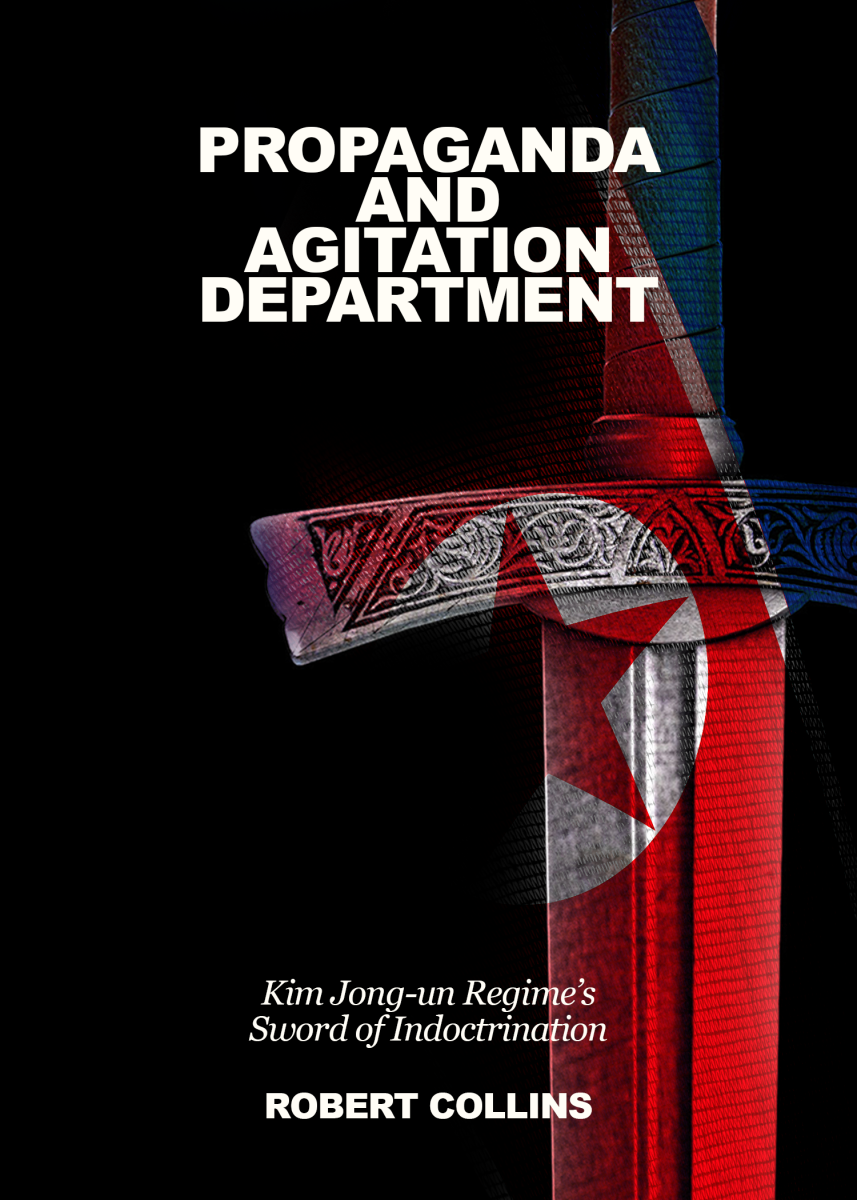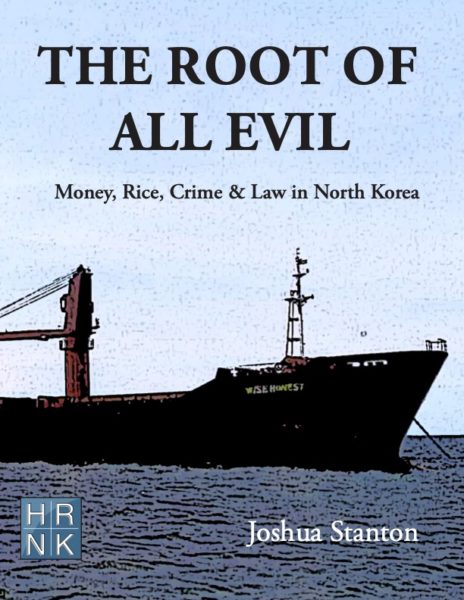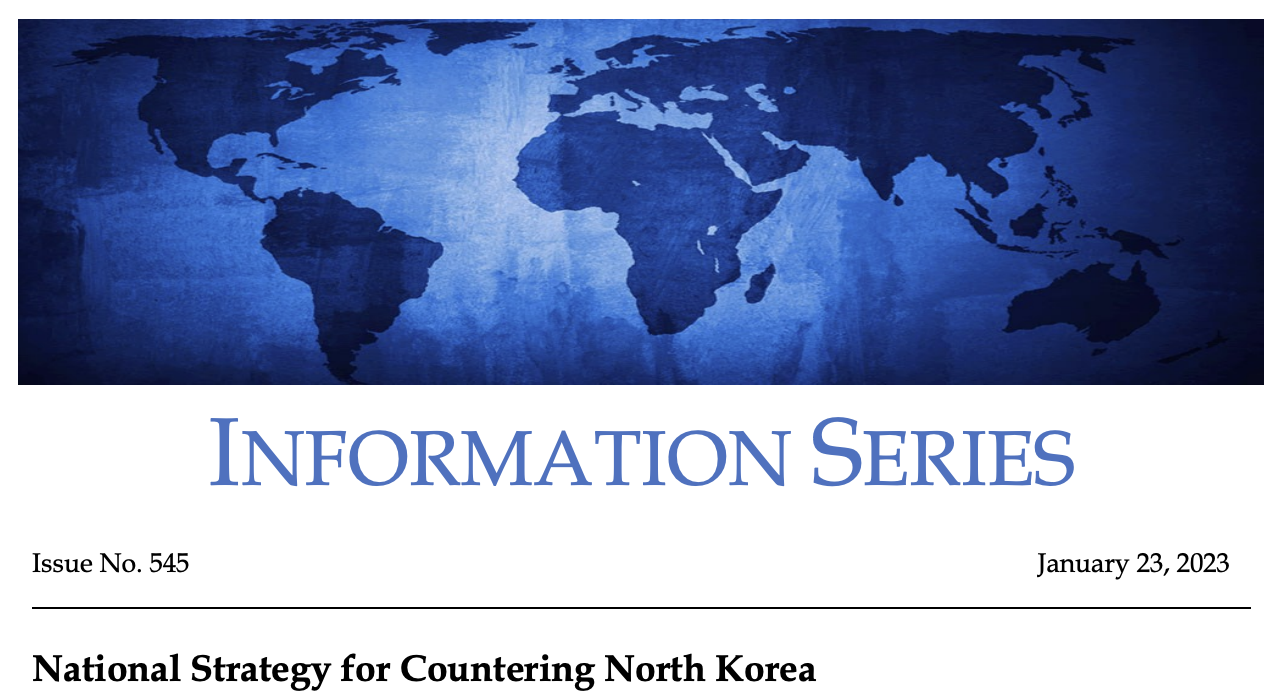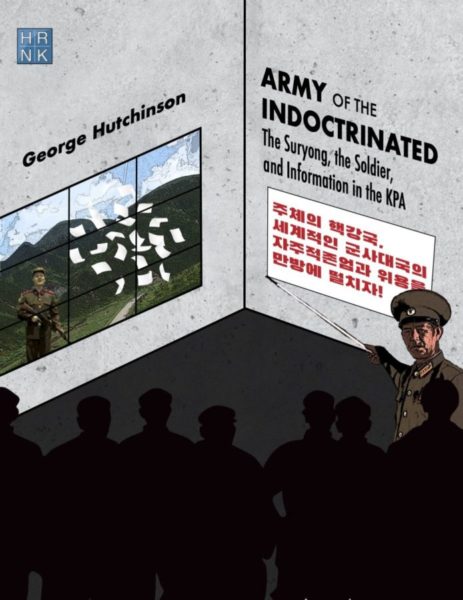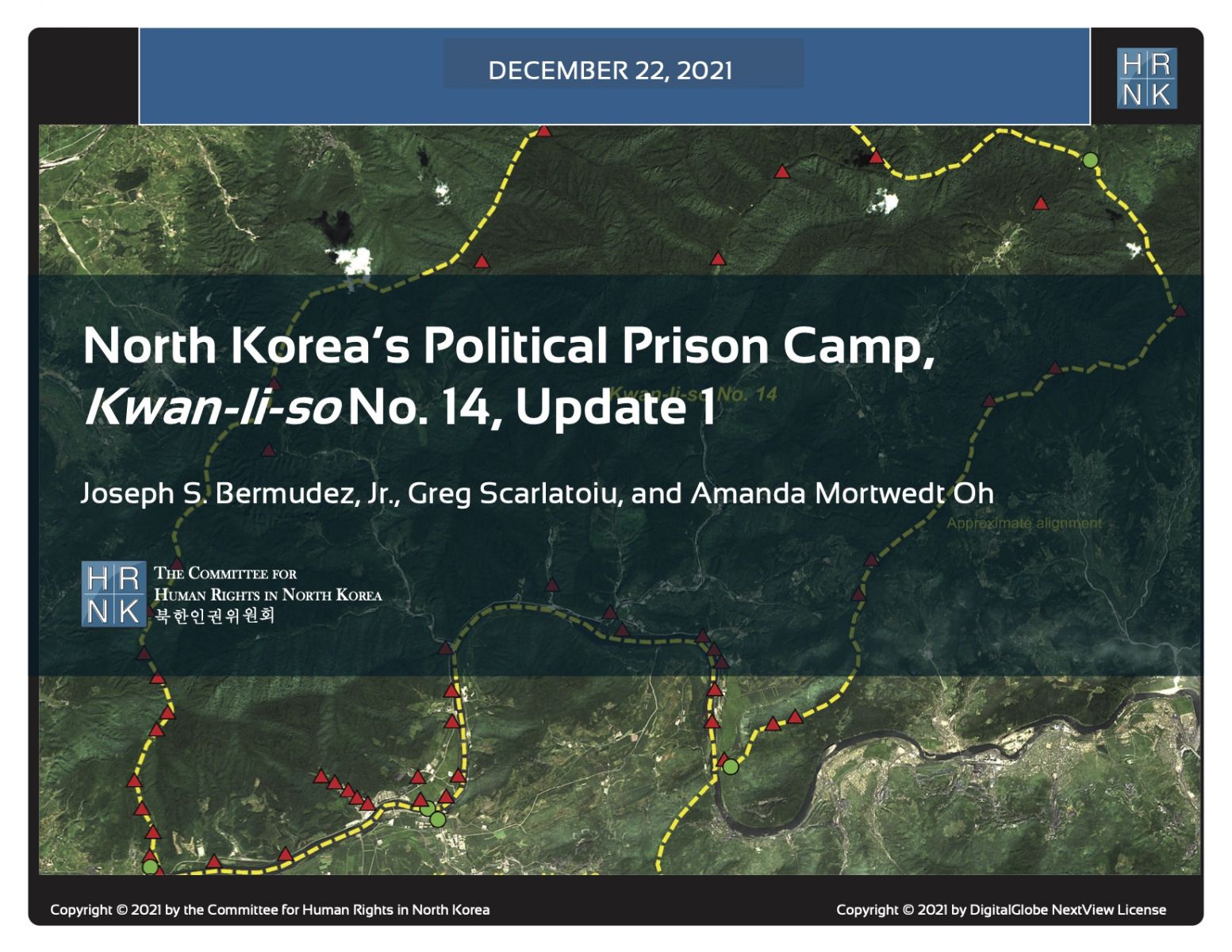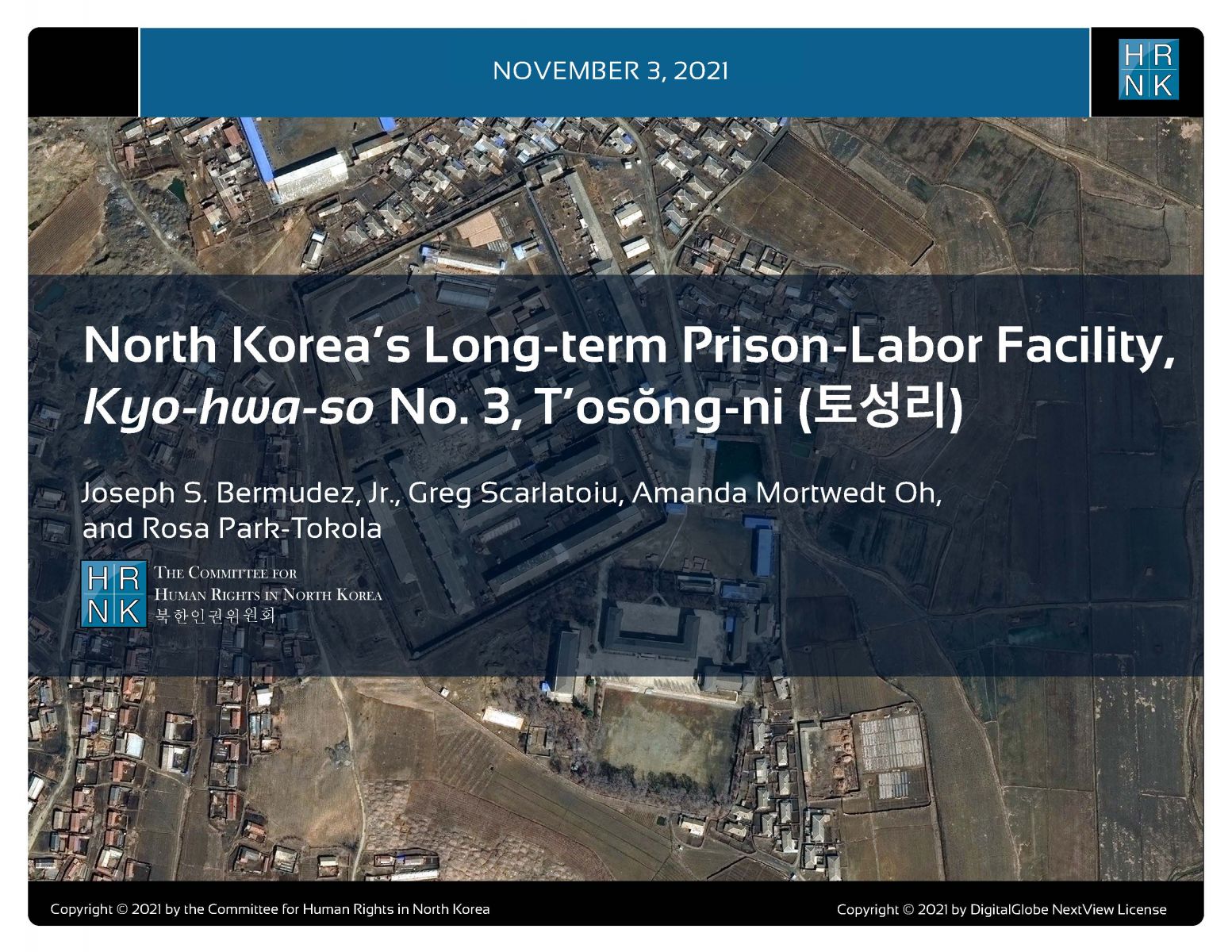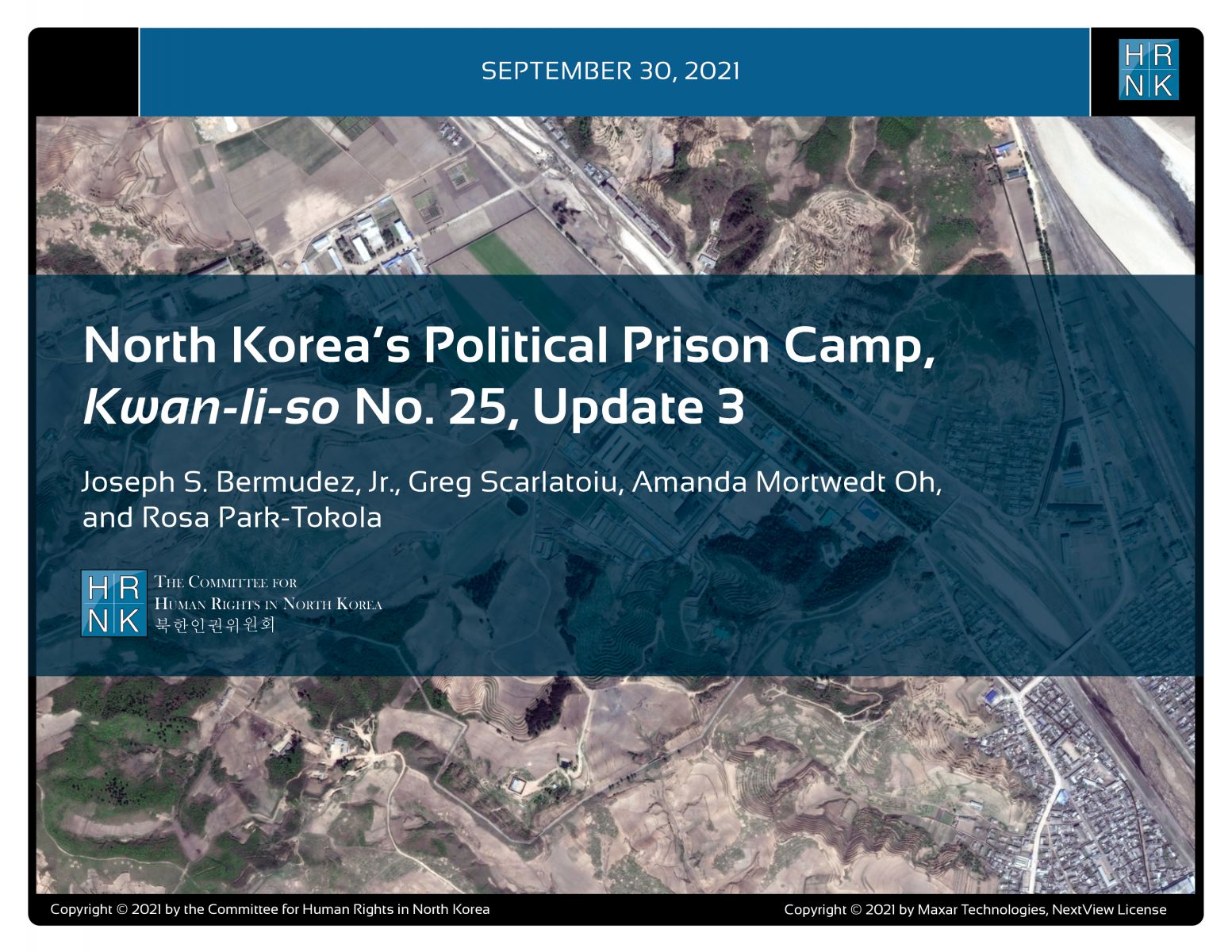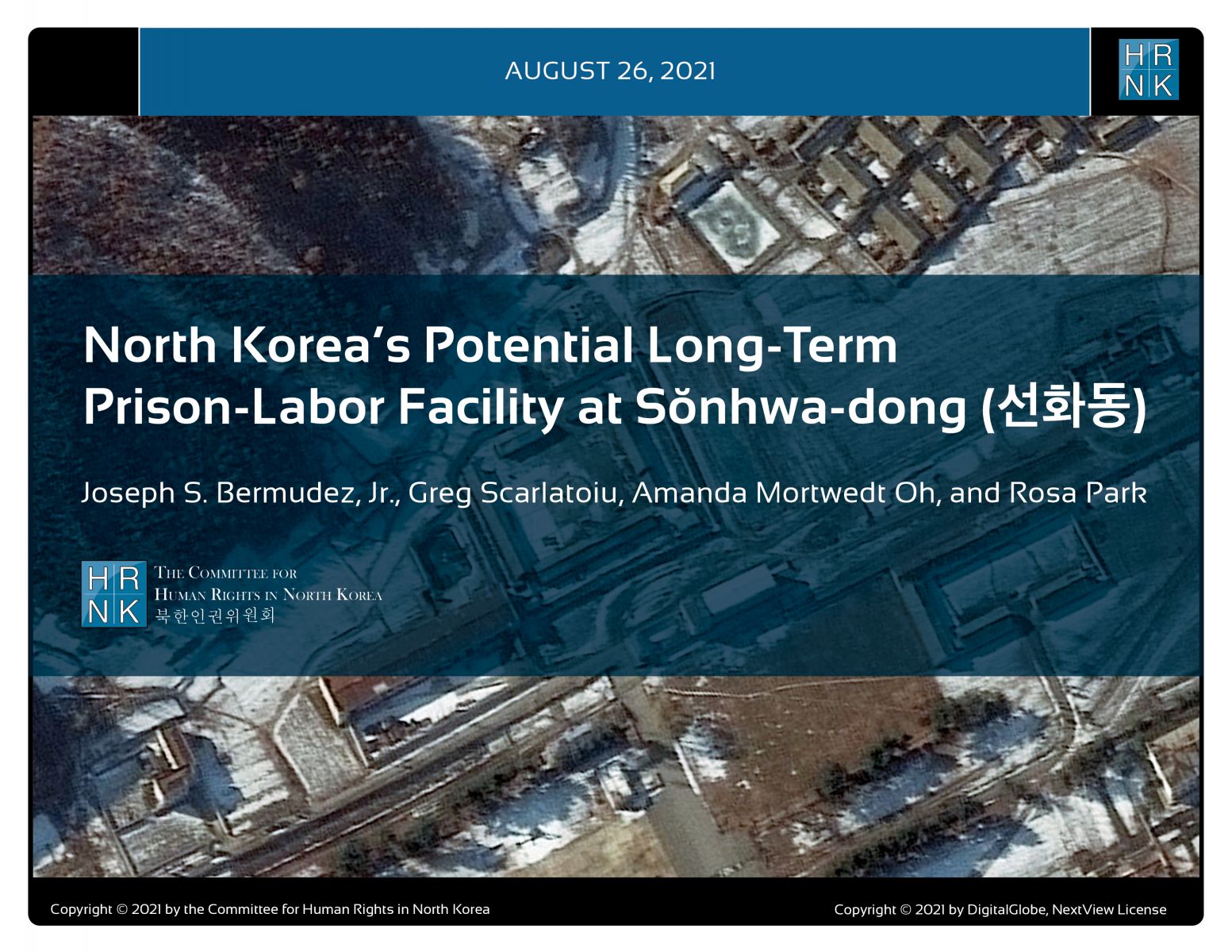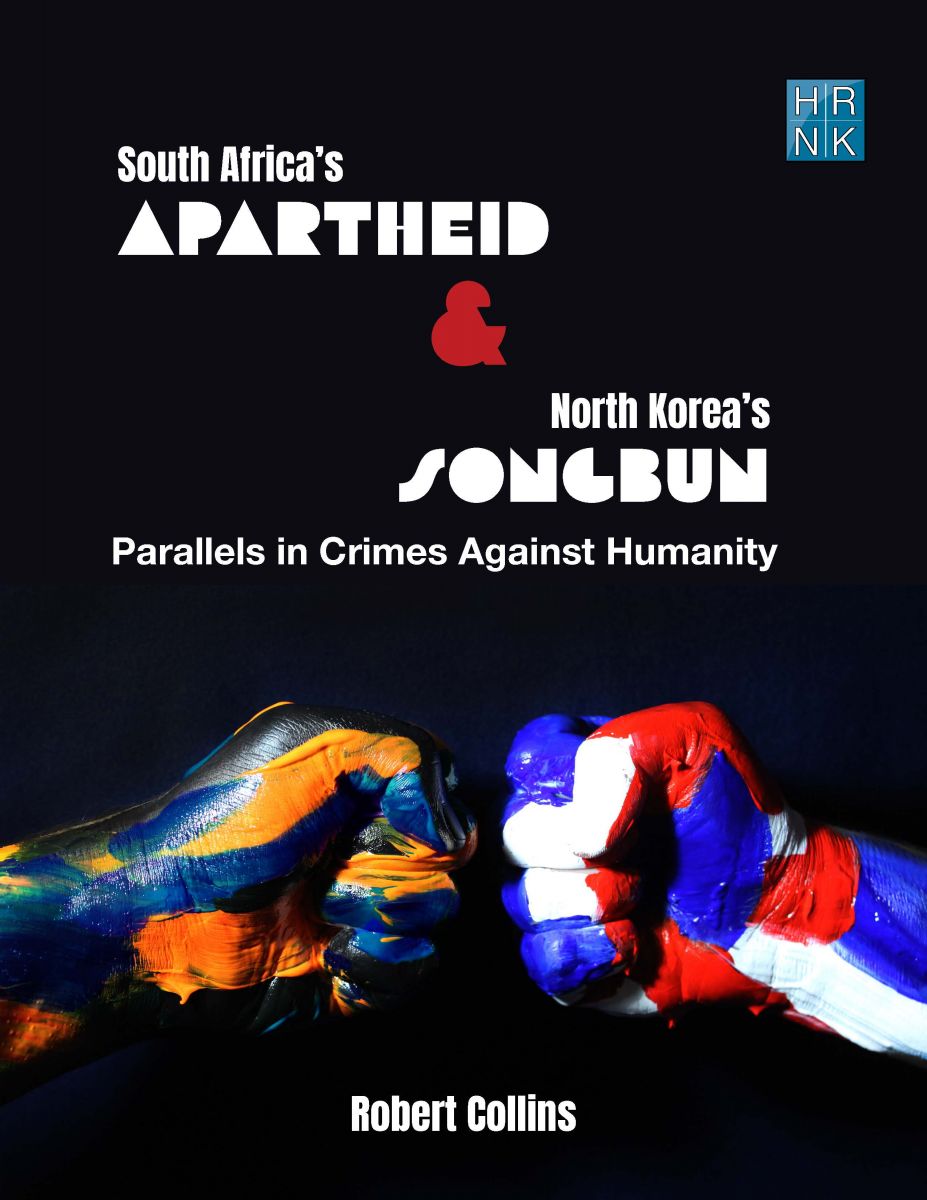PRESS RELEASE
Wednesday, March 25, 2020
The Committee for Human Rights in North Korea (HRNK) Launches Report Based on Former Prisoner Testimony and Satellite Imagery of North Korea’s Long-term Prison-labor Facility Kyo-hwa-so No. 1, Kaech’on
Report confirms the use of forced labor for over half a century. Eighty percent of prisoners are Ryanggang Province residents captured while attempting to cross into China. Witness testifies to the presence of shallow graves, corpses scattered as fertilizer. Different types of detention facilities have operated over time at this location, including a possible underground political prison camp.
The Committee for Human Rights in North Korea (HRNK), a non-governmental organization based in Washington, D.C., has launched a report titled North Korea’s Long-term Prison-labor Facility Kyo-hwa-so No. 1, Kaech’on. This report is part of a comprehensive long-term project undergone by HRNK to use satellite imagery and survivor testimony to shed light on human suffering in North Korea. This study combines former prisoner testimony collected in 2019 with declassified satellite imagery collected during 1962–1972 and imagery from 2002 to 2019.
Kyo-hwa-so No. 1, Kaech'on is located in Kaech’on-si, Pyongnam, about 2.6 kilometers east of the city of Kaech'on and approximately 75 kilometers north-northeast of the capital city of Pyongyang.
The report can be downloaded from HRNK’s website (www.hrnk.org), together with other HRNK publications. For this report, HRNK analyzed 19 high-resolution pan-sharpened multispectral and pan-chromatic satellite images of Kyo-hwa-so No. 1 and its immediate environs.
Senior HRNK satellite imagery analyst and report author Joseph S. Bermudez, Jr. pointed out that, “according to some accounts, Kyo-hwa-so No. 1 is assumed to be the oldest kyo-hwa-so in North Korea,” and “satellite imagery clearly shows a detention facility here since the 1960s.” As Bermudez further detailed, declassified imagery collected by a CIA KH-4 reconnaissance satellite on December 15, 1962 shows the early stages of construction of Kyo-hwa-so No. 1.
Bermudez is an internationally recognized analyst, award winning author, and lecturer on North Korean defense and intelligence affairs, who previously testified before the United Nations Commission of Inquiry on Human Rights in the Democratic People’s Republic of Korea (UN COI).
HRNK executive director and report contributor Greg Scarlatoiu emphasized that “satellite imagery and witness testimony attest that prison labor has been employed systematically and extensively for over half a century, since the first half of the 1960s.” While coal mining continues, it has somehow subsided, due to the depletion of resources around the camp. According to witnesses, female prisoners are forced to work in agriculture, animal husbandry, knitting, vegetable farming, fruit trees, and plumbing. Male prisoners continue to work in adjacent coal mines and are also engaged in the manufacturing of shoes, belts, pistol holsters, and military boots.
Amanda Mortwedt Oh, HRNK human rights attorney and report contributor, pointed out that we now understand that, right next door to the Kaech’on Kyo-hwa-so, “an underground kwan-li-so political prison camp may have operated.” According to Mortwedt Oh, “currently a partitioned area of the camp may operate as a ro-dong-dan-ryun-dae, a labor training center tasked with dispatching prisoners to mobile forced labor brigades.” Mortwedt Oh emphasized that “we owe this new level of understanding in part to the brave people who speak out about their suffering inside the prison’s walls.”
Rosa Park, HRNK director of programs and report contributor, added: “One of the great strengths of satellite imagery analysis is in the fact that despite the Kim regime's attempts to cover up their crimes against humanity, the world will still be able to see clearly thanks to not only the most recent high-definition imagery, but also thanks to the historic imagery taken since 1962.”
Based on former prisoner testimony and high-resolution satellite imagery, the camp can be separated into the following features: internal and external security perimeters, entrance and guard positions; the main prison; headquarters, administration, barracks, guard, and administration housing and support facilities; labor training center/mobile labor brigade dispatch center, also comprising an older underground political prison camp; and walled compounds. The external perimeter of the camp is 1,590 meters long (1740 yards long). The total area of the camp is about 107,190 square meters (128,199 square yards).
According to witness testimony corroborated by satellite imagery analysis, prison population estimates for Kyo-hwa-so No. 1 have been between 2,000 and 6,000. Former prisoners confirmed that 80% of prisoners are residents of Ryanggang Province who were captured and subsequently imprisoned while crossing into China.
In 2019, HRNK interviewed Ms. Kim Il-soon (pseudonym), a former detainee at the camp. In a shocking disclosure, Ms. Kim told HRNK: ‘The kyo-hwa-so farmland in Kaech’on is yellow. The lands are very fertilized, and farming is successful here because the buried human bodies serve as natural fertilizer. Some guards said that they should bury the bodies evenly throughout the land so that it will fertilize the entire area.”
The camp is run by the Pyongnam-si Provincial Bureau of the Prisons Bureau of the Ministry of People’s Security (MPS), operating directly under the State Affairs Commission, chaired by Kim Jong-un, Chairman of the Workers’ Party of Korea.
Although this report comprises former prisoner testimony, senior satellite imagery analyst Joseph S. Bermudez, Jr. emphasized that “it is important to reiterate that North Korean officials, especially those within the Korean People’s Army and the internal security organizations, clearly understand the importance of implementing camouflage, concealment, and deception (CCD) procedures to mask their operations and intentions.”
The report, North Korea’s Long-term Prison-labor Facility Kyo-hwa-so No. 1, Kaech’on, is available on HRNK’s website: https://www.hrnk.org//uploads/pdfs/Bermudez_Kaechon_FINAL.pdf.
Contact:
Greg Scarlatoiu, executive director
This is the first satellite imagery report by HRNK on a long-term political prison commonly identified by researchers and former detainees as Kwan-li-so No. 18 (Pukch'ang).
This report was concurrently published on Tearline at https://www.tearline.mil/public_page/prison-camp-18.
To understand the challenges faced by the personnel who are involved in North Korea’s nuclear program, it is crucial to understand the recruitment, education, and training processes through the lens of human rights. This report offers a starting point toward that understanding.
North Korea’s scientists and engineers are forced to work on the nuclear weapons program regardless of their own interests, preferences, or aspirations. These individuals may be described as “moder
In this submission, HRNK focuses its attention on the following issues in the DPRK:
- The status of the system of detention facilities, where a multitude of human rights violations are ongoing.
- The post-COVID human security and human rights status of North Korean women, with particular attention to sexual and gender-based violence (SGBV).
- The issue of Japanese abductees and South Korean prisoners of war (POWs), abductees, and unjust detainees.
This report provides an abbreviated update to our previous reports on a long-term political prison commonly identified by former prisoners and researchers as Kwan-li-so No. 25 by providing details of activity observed during 2021–2023.
This report was originally published on Tearline at https://www.tearline.mil/public_page/prison-camp-25.
This report explains how the Kim regime organizes and implements its policy of human rights denial using the Propaganda and Agitation Department (PAD) to preserve and strengthen its monolithic system of control. The report also provides detailed background on the history of the PAD, as well as a human terrain map that details present and past PAD leadership.
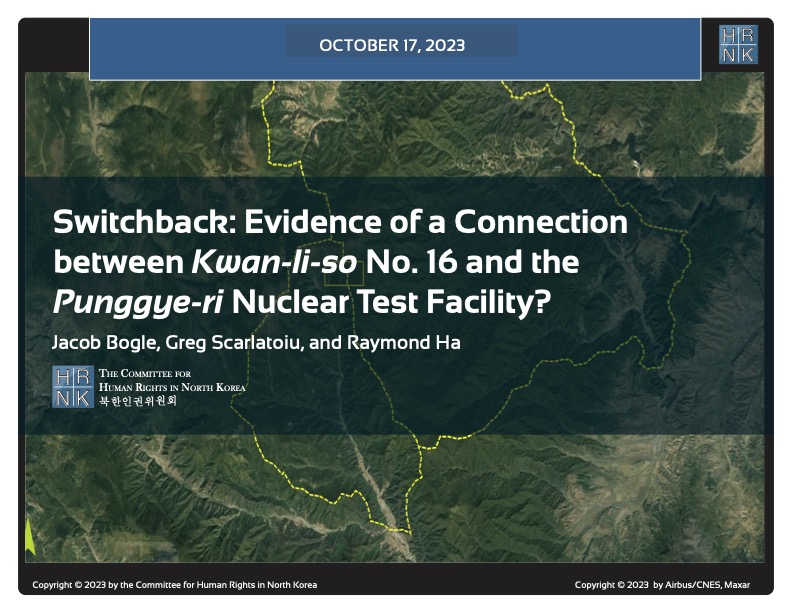
HRNK's latest satellite imagery report analyzes a 5.2 km-long switchback road, visible in commercial satellite imagery, that runs from Testing Tunnel No. 1 at North Korea's Punggye-ri nuclear test facility to the perimeter of Kwan-li-so (political prison camp) no. 16.
This report proposes a long-term, multilateral legal strategy, using existing United Nations resolutions and conventions, and U.S. statutes that are either codified or proposed in appended model legislation, to find, freeze, forfeit, and deposit the proceeds of the North Korean government's kleptocracy into international escrow. These funds would be available for limited, case-by-case disbursements to provide food and medical care for poor North Koreans, and--contingent upon Pyongyang's progress
For thirty years, U.S. North Korea policy have sacrificed human rights for the sake of addressing nuclear weapons. Both the North Korean nuclear and missile programs have thrived. Sidelining human rights to appease the North Korean regime is not the answer, but a fundamental flaw in U.S. policy.
(Published by the National Institute for Public Policy)
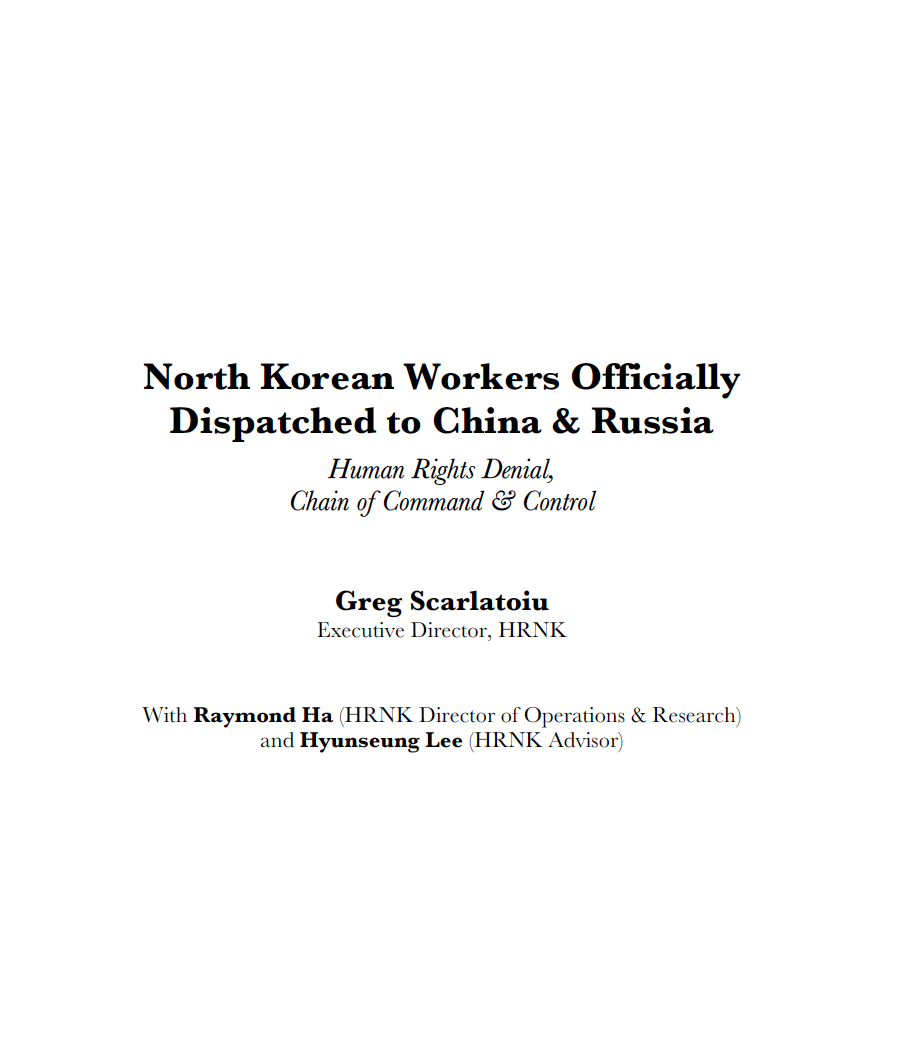
North Korea’s forced labor enterprise and its state sponsorship of human trafficking certainly continued until the onset of the COVID pandemic. HRNK has endeavored to determine if North Korean entities responsible for exporting workers to China and Russia continued their activities under COVID as well.
George Hutchinson's The Suryong, the Soldier, and Information in the KPA is the second of three building blocks of a multi-year HRNK project to examine North Korea's information environment. Hutchinson's thoroughly researched and sourced report addresses the circulation of information within the Korean People's Army (KPA). Understanding how KPA soldiers receive their information is needed to prepare information campaigns while taking into account all possible contingenc
This report is part of a comprehensive long-term project undertaken by HRNK to use satellite imagery and former prisoner interviews to shed light on human suffering in North Korea by monitoring activity at political prison facilities throughout the nation. This is the second HRNK satellite imagery report detailing activity observed during 2015 to 2021 at a prison facility commonly identified by former prisoners and researchers as “Kwan-li-so No. 14 Kaech’ŏn” (39.646810, 126.117058) and
This report is part of a comprehensive long-term project undertaken by HRNK to use satellite imagery and former prisoner interviews to shed light on human suffering in North Korea by monitoring activity at civil and political prison facilities throughout the nation. This study details activity observed during 1968–1977 and 2002–2021 at a prison facility commonly identified by former prisoners and researchers as "Kyo-hwa-so No. 3, T'osŏng-ni" and endeavors to e
This report is part of a comprehensive long-term project undertaken by HRNK to use satellite imagery and former detainee interviews to shed light on human suffering in the Democratic People’s Republic of Korea (DPRK, more commonly known as North Korea) by monitoring activity at political prison facilities throughout the nation. This report provides an abbreviated update to our previous reports on a long-term political prison commonly identified by former prisoners and researchers as Kwan-li-so<
Through satellite imagery analysis and witness testimony, HRNK has identified a previously unknown potential kyo-hwa-so long-term prison-labor facility at Sŏnhwa-dong (선화동) P’ihyŏn-gun, P’yŏngan-bukto, North Korea. While this facility appears to be operational and well maintained, further imagery analysis and witness testimony collection will be necessary in order to irrefutably confirm that Sŏnhwa-dong is a kyo-hwa-so.
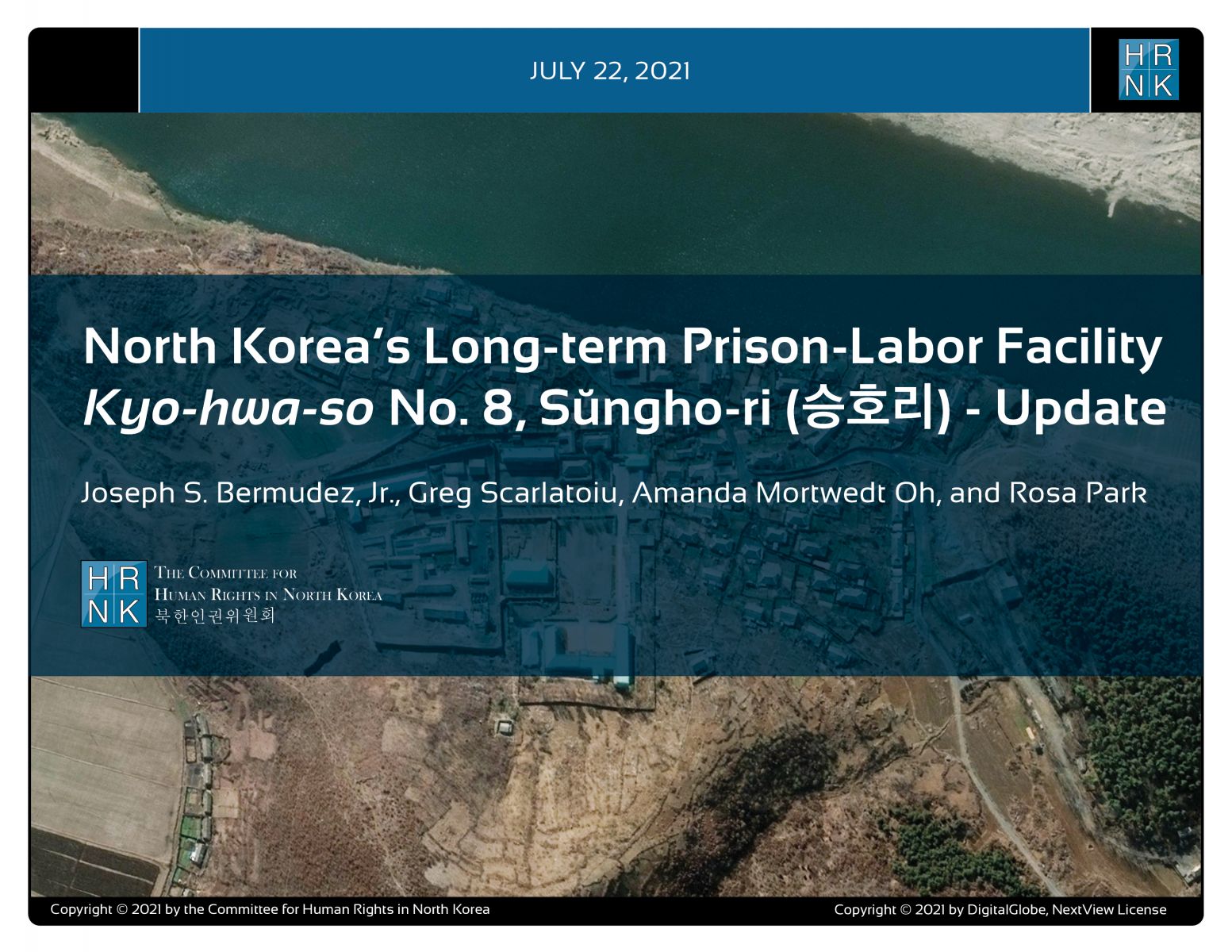
"North Korea’s Long-term Prison-Labor Facility Kyo-hwa-so No. 8, Sŭngho-ri (승호리) - Update" is the latest report under a long-term project employing satellite imagery analysis and former political prisoner testimony to shed light on human suffering in North Korea's prison camps.
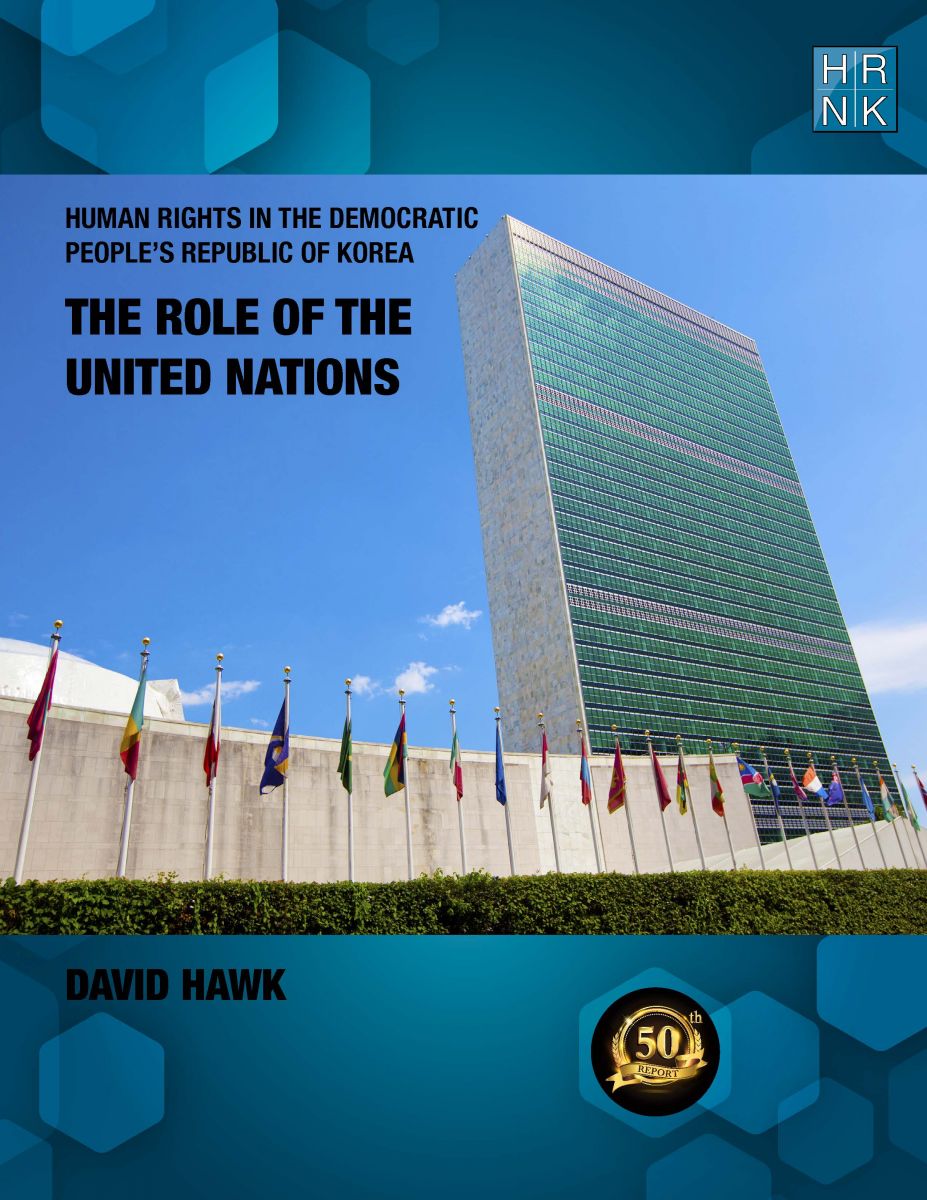
Human Rights in the Democratic Republic of Korea: The Role of the United Nations" is HRNK's 50th report in our 20-year history. This is even more meaningful as David Hawk's "Hidden Gulag" (2003) was the first report published by HRNK. In his latest report, Hawk details efforts by many UN member states and by the UN’s committees, projects and procedures to promote and protect human rights in the DPRK. The report highlights North Korea’s shifts in its approach
South Africa’s Apartheid and North Korea’s Songbun: Parallels in Crimes against Humanity by Robert Collins underlines similarities between two systematically, deliberately, and thoroughly discriminatory repressive systems. This project began with expert testimony Collins submitted as part of a joint investigation and documentation project scrutinizing human rights violations committed at North Korea’s short-term detention facilities, conducted by the Committee for Human Rights

